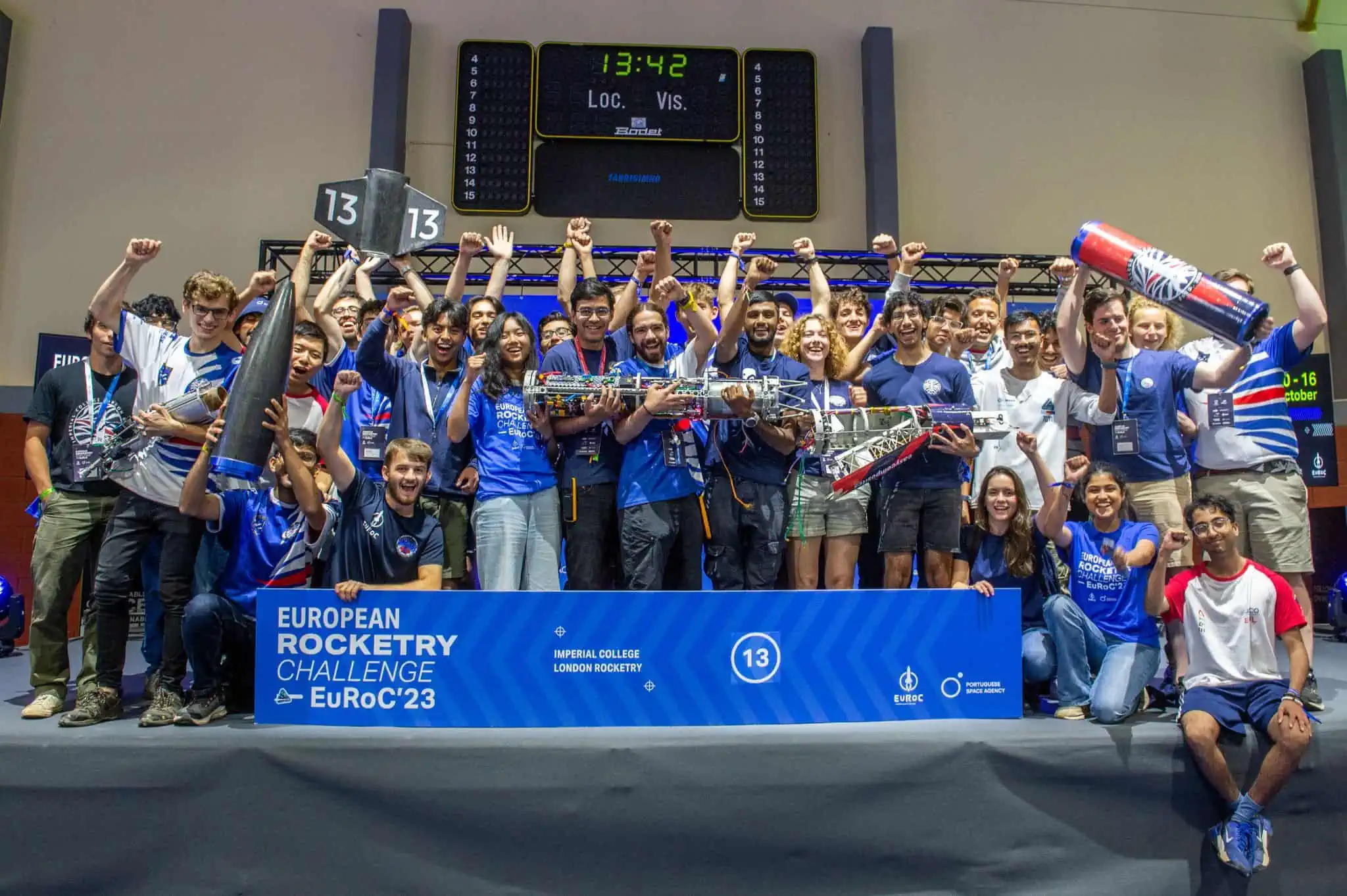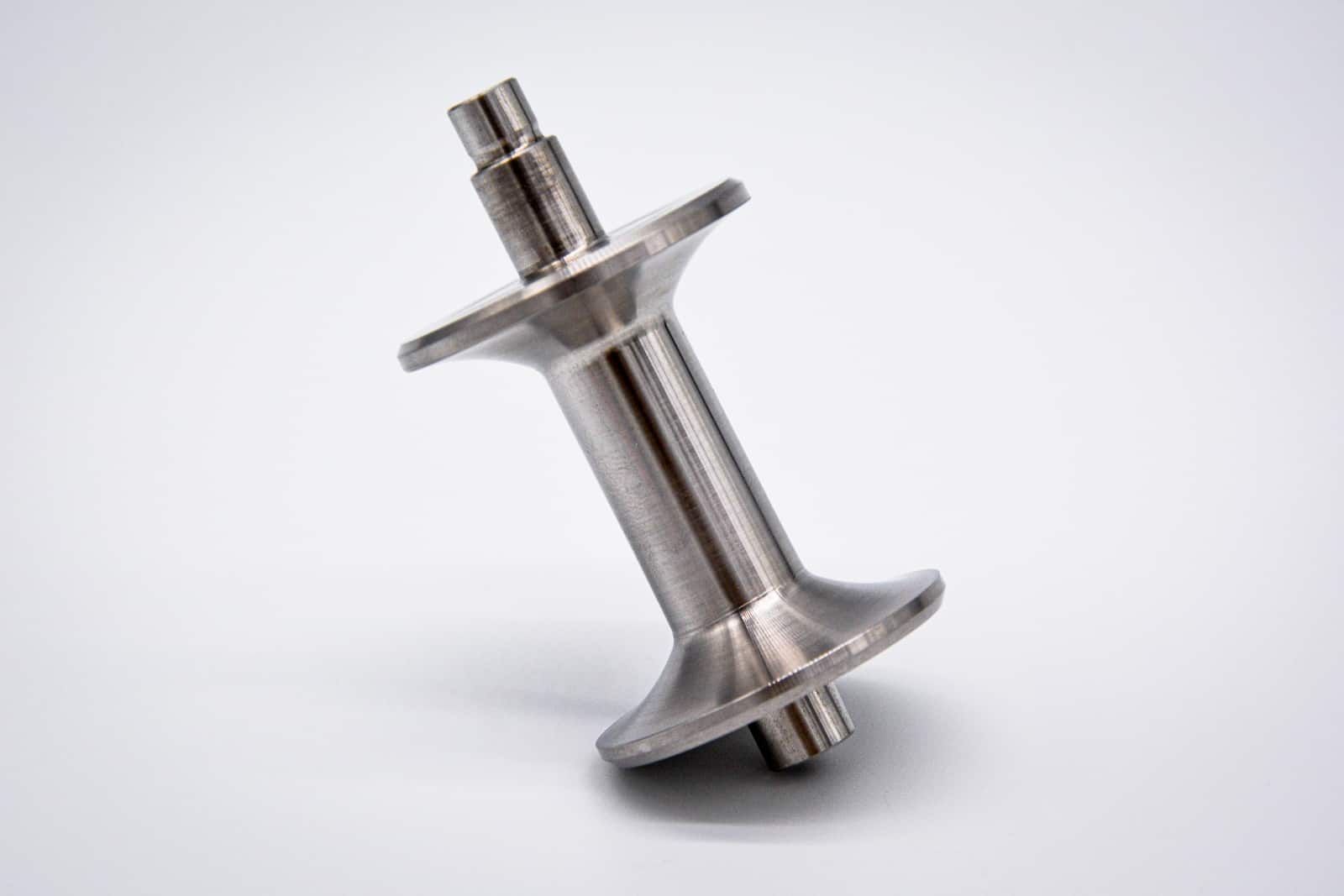- Industry: Rockets, Aerospace, Space, Aeronautics
- Manufacturing process used: Aluminium CNC Machining, Blue Anodising
- Challenge: Produce essential rocket parts in rapid time to build NIMBUS rocket for launch at EuRoc 23 competition
- Solution: Utilising Xometry’s massive manufacturing network, produce precision CNC machined parts in just a few weeks
—
The Imperial College of London Rocketry (ICLR) is a student-led team of talented future aerospace engineers, developing experimental rockets, with the aim to break the UK altitude record and one day reach space. Their flagship rocket known as NIMBUS, features a throttleable liquid rocket motor developed in-house, as well as a range of student-designed and researched rocket components. Since its creation in 2018, the team has had over 100 students working tirelessly to achieve its goals.
NIMBUS, the First UK Student Liquid Propellant Rocket
NIMBUS is a next-generation rocket, featuring the first ever student built liquid propellant engine. Together with Xometry’s support, the ICLR team brought to life some incredibly important parts of the NIMBUS rocket airframe and propulsion system.


The first part, the tank end caps, sealed the custom oxidiser tank, which held the high-pressure Nitrous Oxide used to power the rocket engine THANOS, which was possible to manufacture with Xometry’s mass reduction design. Similarly integral, was the incredible new clamp band system that separates the nose cone to deploy the parachute and safely recover the NIMBUS rocket after flight launch. Xometry’s high-quality precision manufacturing capabilities helped the ICLR team produce our nose cone integration part and stinger tube coupler, both essential for the structural rigidity of the rocket’s airframe and experiments.


“The collaboration with Xometry helped us produce all these amazing parts our team has designed, allowing us to build NIMBUS and compete at EuRoC 2023! We are incredibly thankful for Xometry’s support and excited about future collaboration.” Jason Aretaios, MEng Aeronautical Engineering student and partnerships manager for the NIMBUS rocket project.
EuroC23, An Experience of Highs and Lows
The European Rocketry Challenge – EuRoC is the first rocket launch competition for European university teams. The Portuguese Space Agency created the competition in 2020 and has since gathered teams from various European countries in the Alentejo region. Based on constant and sustained growth, the 2023 edition of the competition has the support of the Portuguese Army and the Municipality of Constância.
This year 2023, the competition attracted student engineers from all over Europe for a chance to launch and compete with their own specialised rockets. Judged on the technical build, rocket design, launch flight success and the team’s collaboration. EuroC stimulates young people’s interest in STEM (Sciences, Technologies, Engineering and Mathematics).
For the ICLR team, EuRoC 2023 turned out to be a fantastic event and an incredible experience. By the second day, the ICLR team had concluded their checks following the completed assembly. Their NIMBUS rocket was ready to be reviewed by Flight Readiness (FRR), a panel of EuroC experts responsible for ensuring the rocket’s flight worthiness and safety. After the expert’s rigorous examination, the NIMBUS rocket received approval for flight, successfully passing the FRR. That day marked a significant milestone for the ICLR team with their fully assembled rocket prepared on the paddock. Each sub-team had all their systems ready and in place prepared for launch the next day.
With any engineering project comes successes and failures but the most important aspect is what engineers learn along the way, pick up and utilise in their next design. The next day at EuRoC arrived, the day to launch the NIMBUS rocket – the sky was the limit!

Unfortunately, due to a tank failure that could not be repaired in the remaining duration of EuRoC, the ICLR team were unable to launch NIMBUS after all their hard work. However, the team did not take this as a failure but a learnt lesson and are motivated more than ever to launch their NIMBUS rocket at the next available opportunity. It was evident that the ICLR team’s perseverance is exceptional and all that hard work was not going to waste – NIMBUS will take to the sky in the near future – watch this space!
To Infinity and Beyond – An Exciting Future Ahead for ICLR
The team at Imperial college of London rocketry (ICLR) are now rebuilding the parts of NIMBUS that were damaged and plan to relaunch their rocket in the Netherlands in March 2024. On top of that, the team will make a new rocket, an upgraded version of NIMBUS for EuRoc 2024, which will include a newer, even more impressive version of our liquid rocket engine, competing in the ‘Race to Space ‘, a competition where UK teams test their rocket engines. The team will also continue to reach for the stars, as the altitude record team is aiming to break the UK altitude record and reach 54km with their new two stage rocket they plan to build in July for launch in the Mojave Desert, California.

Share Your Engineering or Product Design Story
Share Your Story!
Share your engineering and product design journey and get a €300 reward! Showcase your innovative solutions and best practices with our community.
 Europe
Europe  Türkiye
Türkiye  United Kingdom
United Kingdom  Global
Global 

 Login with my Xometry account
Login with my Xometry account  0
0














Comment(0)